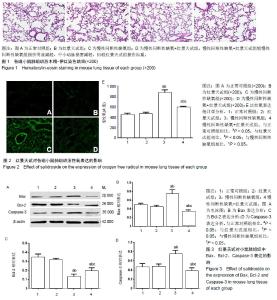| [1]Zhang S,ChenX,YangY,et al.Neuroprotection against cobalt chloride-induced cell apoptosis of primary cultured cortical neurons by salidroside.Mol Cell Biochem 2011;354 (1-2):161-170.[2]马生龙,边惠萍,朱芳一,等.红景天甙对低氧条件下H9C2心肌细胞凋亡及相关蛋白Caspase-3表达的影响[J].高原医学杂志, 2016,26(1):1-4.[3]史佩,杨立霞,王楠.红景天苷对低氧条件下大鼠心肌细胞凋亡及相关蛋白表达的影响[J].中华中医药杂志, 2018,33(9):4195-4199.[4]黄薇,荣黎,陈耀凯,欧阳净,等.红景天甙对人胃癌细胞增殖及凋亡影响的研究[J].中国免疫学杂志,2019,35(6):676-679+685.[5]黄献欢,黄维,高兴华.红景天甙抑制大鼠肺纤维化机制研究[J].临床和实验医学杂志,2018, 17(4):343-345.[6]姚立军,刘媛.红景天甙对慢性阻塞性肺疾病小鼠保护作用机制研究[J].中国药学杂志,2017,52(17):44-47.[7]Ding W,Cai Y,Wang W,et al.Adiponectin protects the kidney against chronic intermittent hypoxia-induced injury through inhibiting endoplasmic reticulum stress.Sleep Breath 2016;20 (3): 1069-1074[8]赵岩,杨丹,于珊珊.黄芪甲苷对慢性心力衰竭大鼠心肌细胞凋亡及P-Cx43表达水平的影响[J].临床和实验医学杂志, 2018,17(20) : 2143-2147.[9]陈小雨,高飞,钱永常.姜黄素在肿瘤治疗中的应用机制[J].临床合理用药杂志,2019,12(9):175-176.[10]吴万征,李朝晖,梁球.西藏红景天对小鼠辐射损伤的保护作用及其抗高原反应与低温环境的作用[J].中药材, 2005,28(2):128-130.[11]Wu XL,Zeng WZ,Wang PL,et al.Effect of compound rhodiolasachalinensis A Bor on CCl4-induced liver fibrosis in rats and its probable molecular mechanisms.World journal of gastroenterology. 2003;9(7):1559-1562.[12]欧阳金生,李玉苹,蔡畅,等.红景天苷对人肺动脉内皮细胞线粒体ROS及细胞分泌功能的影响[J].中华中医药学刊, 2013,31(4):798-800.[13]张金平,汪丽云,王永梅,等.红景天苷对缺氧诱导乳鼠海马神经元凋亡的抑制作用及机制[J].山东医药,2018,58(37):16-19.[14]贾真.红景天苷对大鼠急性心肌缺血的保护作用[J].中医研究,2015,28(8): 57-59[15]Xu J,Qian J,Xie X,et al.High Density Lipoprotein Protects Mesenchymal Stem Cells from Oxidative Stress-Induced Apoptosis via Activation of the PI3K/Akt Pathway and Suppression of Reactive Oxygen Species. Int J Mol Sci.2012;13(12):17104-17120.[16]ChereshP,KimSJ,TulasiramS,etal.Oxidative stress and pulmonary fibrosis.Biochimica Et Biophysica Acta.2013;1832(7):1028-1040.[17]Santos JH,HunakovaL,ChenY,et al.Cell Sorting Experiments Link Persistent Mitochondrial DNA Damage with Loss of Mitochondrial Membrane Potential and Apoptotic Cell Death.JBiol Chem.2003; 278(3):1728-1734.[18]Sinha K,DasJ,PalPB,etal.Oxidative stress: The mitochondria- dependent and mitochondria-independent pathways of apoptosis. ArchToxicol.2013;87(7):1157-1180.[19]Pressly JD, Mustafa SM,AbidiA,etal.Selective cannabinoid 2 receptor stimulation reduces tubular epithelial cell damage following renal ischemia-reperfusion injury.JPharmacolExpTher.2017(2).[20]赵诗洁. 红景天甙对鸡胚肺血管内皮细胞?肺血管平滑肌细胞及心肌细胞中HIF-1α表达的影响[D].武汉:华中农业大学, 2014. |

